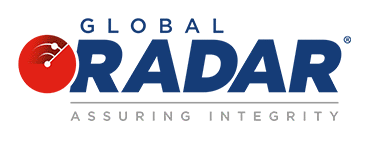The cannabis industry has seen explosive growth over the past several
years, with mainstream adoption of the drug and its derivatives for
medicinal and/or recreational use gaining significant traction throughout
much of the United States. Despite multi-state acceptance however,
marijuana remains illegal at the federal level – creating a conundrum for
American financial institutions lacking specific regulatory guidance and
parameters for providing services to marijuana-related businesses (MRBs)
while maintaining compliance with respective local and federal regulations.
As such, much of the legality of doing business with cannabis-related
businesses is still ambiguous, with banks left to navigate these murky
waters at their own risk. Today, MRBs – that is, any business operating in
the growing, production, processing, distribution, transport or sales of
marijuana-derived products – remain “high risk” entities in the eyes of
banks small and large given this aforementioned lack of clarity coupled with
the propensity of these businesses being cash-heavy enterprises that are
more susceptible to financial crimes such as money laundering and tax
evasion. Yet while there are inherent risks associated with the industry as a
whole, investment into this growing market has undeniable upside. Legal
marijuana sales are estimated to reach $92 billion in the U.S. in 2021 – a
30% increase from 2020 alone – with this figure expected to climb to the
area of $160 billion by 2025.1 Yet while marijuana dispensaries and other
businesses have been forced to sit on their cash as they await access to
traditional banking services, many have begun to delve into alternatives
(such as cashless ATMs, adoption of digital currency options as a means of
payment, and use of applications such as PayQwick that assist in handling
the compliance aspects of a MRBs funds transfers) that have helped to
alleviate many of the pitfalls associated with all-cash businesses.
Relief may soon be on the horizon in the form of the Secure and Fair
Enforcement (SAFE) Banking Act of 2021, a bipartisan measure which
passed in the U.S. House of Representatives in April. This bill generally
prohibits a federal banking regulator from penalizing a depository
institution for providing banking services to a legitimate cannabis-related
business.2 Prohibited penalties include terminating or limiting the deposit
insurance or share insurance of a depository institution solely because the
institution provides financial services to a legitimate cannabis-related
business and prohibiting or otherwise discouraging a depository institution
from offering financial services to such a business.2 While it remains to be
seen whether the bill will ultimately pass the U.S. Senate, the need for
banking services to better meet the growth of cannabis sales across the
country is undeniable. The Financial Crimes Enforcement Network (FinCEN) also recently
offered guidance to banks on cannabis-related businesses (CRBs) including
calling for the requests of pertinent information of respective businesses
from state enforcement and licensing authorities, as well as maintaining
practices for verifying licenses and business registration. FinCEN has also
specifically stated that more suspicious activity reports (SARs) will need to
be filed as a result of doing business with cannabis-related companies,
though given the fact that hemp is no longer a Schedule I controlled
substance under the Controlled Substances Act, banks are not required to
file a Suspicious Activity Report (SAR) on customers solely because they are
engaged in the growth or cultivation of hemp in accordance with applicable
laws and regulations. FinCEN has warned that a bank must have a
BSA/AML compliance program that is up to par with the level of complexity
and risk involved with offering services to CRBs/MRBs, however. The
regulatory body does allow for banks to use BSA/AML software to automate
the process of risk-rating and flagging of suspicious activity – a practice that
has become commonplace for transaction monitoring and know-your-
customer (KYC) protocols, but one that is still gaining traction for use in
relation to banking cannabis. Fortunately for the modern financial
institution, such solutions do exist and are making waves with respect to
maintaining compliance with increasingly complex marijuana regulations.
CRB Monitor is one such solution that is leading the charge towards
safeguarding financial institutions while allowing them to better provide
services to cannabis-related enterprises, as the firm remains the only
corporate intelligence database focused solely on the marijuana industry.
Though their software was originally developed for marijuana-related
investment banking, their database became so comprehensive that it
allowed the firm to create the most robust cannabis-related screening tool
currently on the market today. The company runs on a risk-classification
system where risk level is tiered dependent on the distinct level of the
supply chain that a MRB/CRB may be operating within. Under their system,
Tier 1 CRBs are defined as licensed firms that are directly involved in the
cultivation, processing and manufacturing of marijuana-related products.
Tier 2 and 3 companies on the other hand are “indirectly” involved, focused
more so on providing products and services to Tier 1 CRBs and the
marijuana industry in general (i.e. companies providing additional services
such as accounting, marketing or supplies to Tier 1’s) – the difference being
that Tier 2’s see far greater revenue from their dealings with Tier 1’s than
do their Tier 3 counterparts.3 Through the power of their unrivaled data
collection capacity, CRB Monitor has been able to acquire and maintain
valuable incorporation and other relevant information on marijuana-related
entities that is otherwise unavailable to the greater banking sector, giving
banks who choose to screen their client portfolios against this data insight
into the extent that they are currently servicing CRBs anywhere along the
line from Tier 1 to Tier 3. Until all-encompassing legislation is passed to address the glaring
holes in cannabis banking regulations, banks are left to cover their own
bases against the inherent risks associated with the booming marijuana
market. Operating under a risk-based approach remains paramount in
staying compliant with respect to offering services to CRBs/MRBs. It is clear
that in these uncertain times, American banks and credit unions looking to
bank cannabis businesses would be wise to seek access to the wealth of
information offered by marijuana-related screening tools such as those
offered by Global RADAR in conjunction with CRB Monitor.
For more information on the impact of this growing field on the banking
sector, download our free eBook: Banking Cannabis.
Citations
1. Cope, Guy. “Weighing the Risks and Rewards of Cannabis Banking.” BAI, 3 Sept. 2021.
2. “H.R.1996 – SAFE Banking Act of 2021.” Congress.gov.
3. Repanich, Tony. “Cannabis Banking: How Well Do You Know Your
Regulators Keep Busy as 2024 Draws to Close
While the end of the calendar year generally translates to slowed production across

